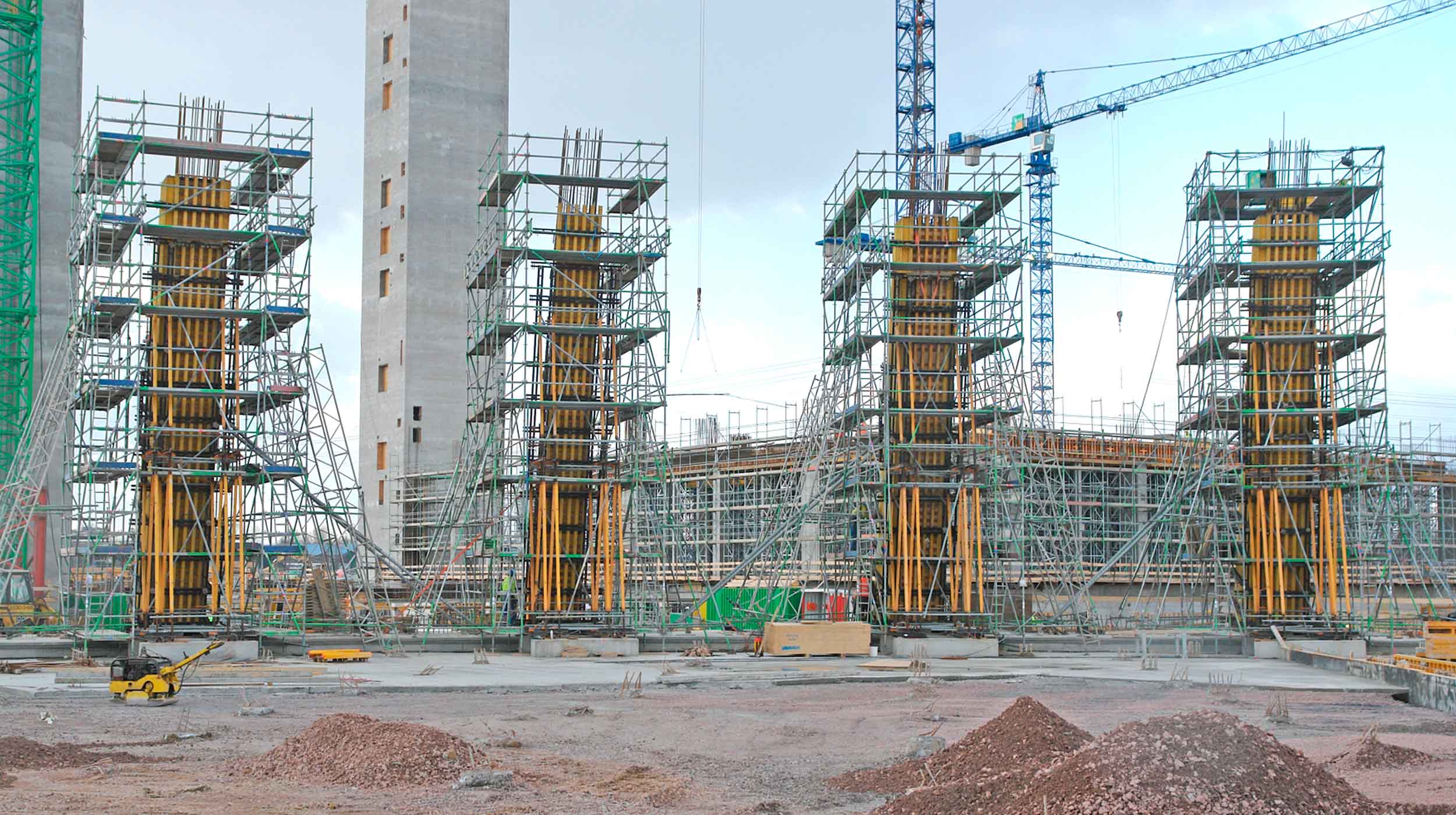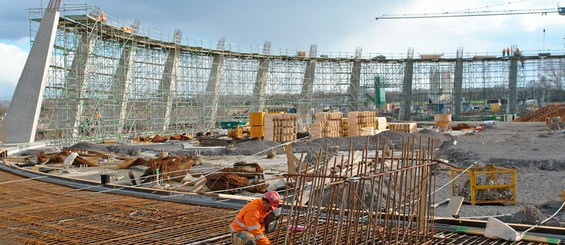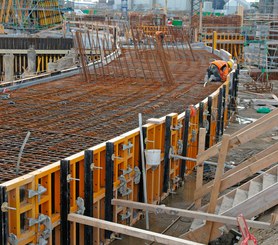Description
It is one of the largest construction projects to be carried out in recent years in North Rhine-Westphalia: a new generation of power plants, the first one in Datteln.
ULMA Solution
In this type of execution, it is necessary to reduce construction costs, fulfill the highest quality requirements, and always in the less time possible. Together with these objectives, high safety standards must be maintained, which is why real specialization in the work is required. In this manner, customized solutions adapted to the requirements of this construction project were offered.
During the first phase, approximately 30,000 m3 of concrete were used, with various formwork systems for building walls, columns and slabs for the engine room, boiler area, cooling tower and auxiliary buildings.
The supply scope was completed with 8,500 m2 of ORMA formwork, 11,200 m2 of slab formwork, 5,500 linear meters of T-60 Shoring System and 56,000 linear meters of timber beams. The quality of the material and its high performance, combined with the technical knowledge and the flexibility of the formwork, contributed towards the on time core construction, despite tight deadlines.
During phase I, the most striking buildings of the plant were built. In addition to the engine room and the boiler room, the cooling tower, whose structure consists of a circular wall and 36 columns, is also worth mentioning. Due to the structural characteristics of this type of facility, large quantities of concrete were required for the foundations of the machine room, the boiler room and the pumping station. In the execution of the machine room, 5,500 meters of T-60 were used, with a maximum tower height of 8 meters, for a load distribution between slabs on a 4,700 m2 surface. The various components of the falsework allow it to adapt to the formwork and the jobsite requirements. Moreover and its assembly and disassembly are simple since no tools are required. The ORMA formwork displayed its extensive features, since it was used to create the majority of the walls: it reduced assembly times, work costs, and as a result, it contributed to increase the efficiency of the execution processes.






